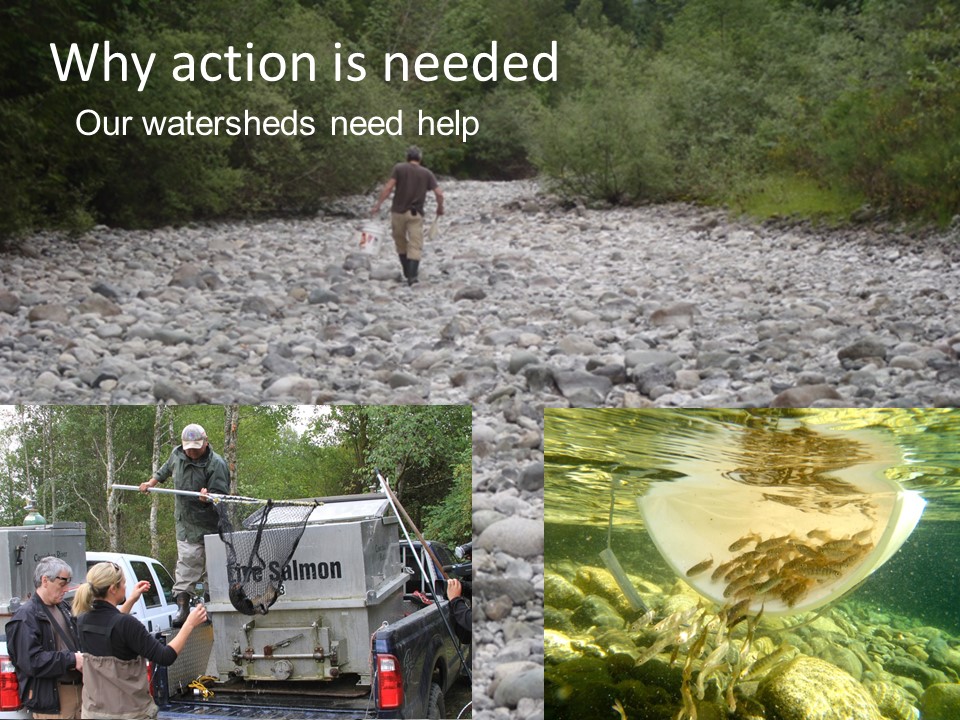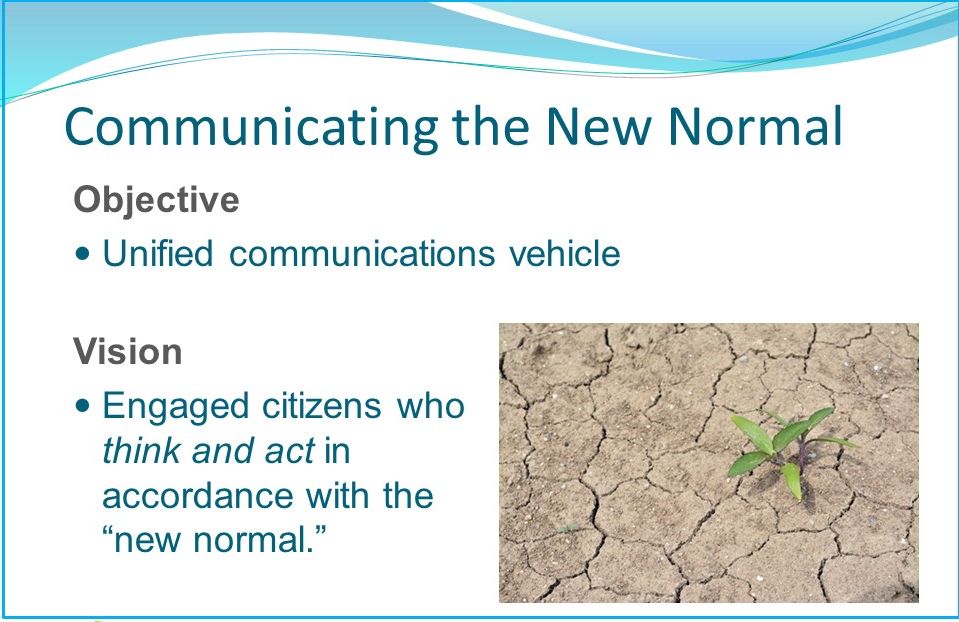VIDEO: “It is proposed to apply whole watershed thinking and follow a risk-based approach to decision-making and management across the region,” stated Keith Lawrence
Solutions and Tools for Building Water-Resilient Communities
In December 2015, the Feast AND Famine Workshop addressed this over-arching question: What should we expect and what can we do to build “water-resilient communities”? The program comprised four modules that were cascading – from high-level visioning to ground-level applications. Adaptation to a changing climate was a unifying theme.
Each module had an identified ‘learning objective’. For Module B, the objective was that participants would understand that: Local government regulates how land is developed, drained and serviced. It has the authority to restore the absorbency of the urban landscape and Water Balance distribution, over time.
Adaptation to a Changing Climate
Western North America may be crossing an invisible threshold into a different hydro-meteorological regime. Annual volumes of water entering and exiting regions are not necessarily changing. Instead, what is changing is how and when water arrives – it is flood and drought!
Showcasing & Sharing Solutions
Practitioners in local government want to learn from those who are innovating. The Cowichan Valley Regional District and North Vancouver District are incubators for approaches that are being replicated elsewhere. Both are demonstrating how to apply science-based understanding and strategies to develop criteria and tools for use in areas where local government action can influence Water Balance outcomes.
In Module B, Keith Lawrence and Richard Boase showcased solutions that their organizations – the Cowichan Valley Regional District and District of North Vancouver, respectively – are pioneering.
A noteworthy aspect of this tag-team is that Cowichan and North Vancouver represent the two forms of local government: regional and municipal. They also demonstrate that local governments can be successful because they have been given the authority to develop tailor-made solutions to local needs.
Droughts and Floods: Communicating the ‘New Normal’ in the Cowichan
The Cowichan Region is demonstrating how to apply science-based understanding and strategies to develop criteria and tools for use in areas where local government action can influence Water Balance outcomes. NewNormalCowichan is a regional adaptation initiative led by the Cowichan Valley Regional District in partnership with the communities that comprise the Cowichan Region. The initiative illustrates what putting ‘water balance thinking’ into action looks like.
Whole Watershed Thinking
 “Recurring region-wide consequences of water-related challenges have prompted regional action to develop governance structures and processes to make the connections between high-level decision making and actions on the ground. The Regional Surface and Ground Water Management and Governance Study identified co-governance with First Nations as a primary condition for success in managing regional water resources,” stated Keith Lawrence.
“Recurring region-wide consequences of water-related challenges have prompted regional action to develop governance structures and processes to make the connections between high-level decision making and actions on the ground. The Regional Surface and Ground Water Management and Governance Study identified co-governance with First Nations as a primary condition for success in managing regional water resources,” stated Keith Lawrence.
“It is proposed to apply whole watershed thinking and follow a risk-based approach to decision-making and management across the region. Currently, over 60 distinct organizations play a role in the governance, management, and stewardship of water resources in the Cowichan Region. Coordination between these organizations is key as we face the pressures of climate change and population growth on our resources.”
Coordinated Approach to Communication
“One of the actions undertaken throughout 2015 was a more coordinated approach to communicating what is happening in our region, and what can we do about it when it comes to climate impacts, particularly with regards to drought and flood,” continued Keith Lawrence.
“Communication had been happening in the region for many years, but this year was a more deliberate attempt to make that communication happen in a coordinated way. We worked with the various local governments to gather information about the impacts. And we also looked at what can we do collectively to solve the issues.”
“A website is one of the tools for communicating the New Normal within the region. The website has information about what homeowners can do, what businesses can do, and what the agricultural sector can do when it comes to water shortages and what folks can do to protect themselves from floods.”
To Learn More:
To download a PDF copy of the PowerPoint presentation by Keith Lawrence, click on Droughts and Floods: Communicating the ‘New Normal’ in the Cowichan





